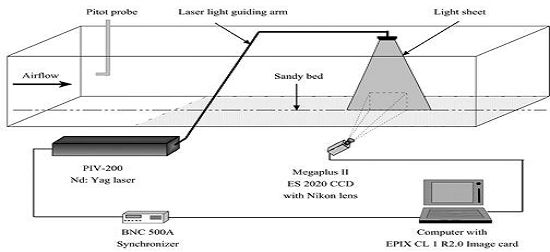The wind-saltation interaction in a saltation boundary layer with a downwind air pressure gradient
Updatetime:2010-11-19From:
【Enlarge】【Reduce】
Studies of interactions between wind and saltating particles (i.e., the wind-saltation interaction) are usually conducted without consideration of the downwind air pressure gradient. However, in a wind tunnel with limited size, this gradient is required to maintain the movement of the saltation cloud. Attempts are made to investigate the effects of the downwind air pressure gradient on the wind-saltation interaction in a saltation boundary layer based on the experimental results from a wind tunnel with a relatively small cross-sectional area. The wind-saltation interaction is characterized by airborne stress, grain-borne stress, and the force exerted on the wind by the saltation cloud. Basic equations were developed for wind-saltation interactions without and with a downwind air pressure gradient. The results reveal that unacceptable values of negative grain-borne stress and negative force exerted on the wind by the saltation cloud are obtained if the downwind air pressure gradient is ignored. When this air pressure gradient is defined using the measured wind velocity profiles in the presence of saltation and the downwind air pressure gradient is taken into account, reasonable values for grain-borne stress and the force exerted on the wind by the saltation cloud are obtained. These results suggest that attention must be paid to the effects of downwind air pressure gradients when studying the wind-saltation interaction in a wind tunnel. Consideration of the downwind air pressure gradient, inertial forces, and other unidentified variables will provide a more thorough understanding of the interactions within a saltation boundary layer.
issued by <<Sciences in Cold and Arid Regions>>

Appendix




